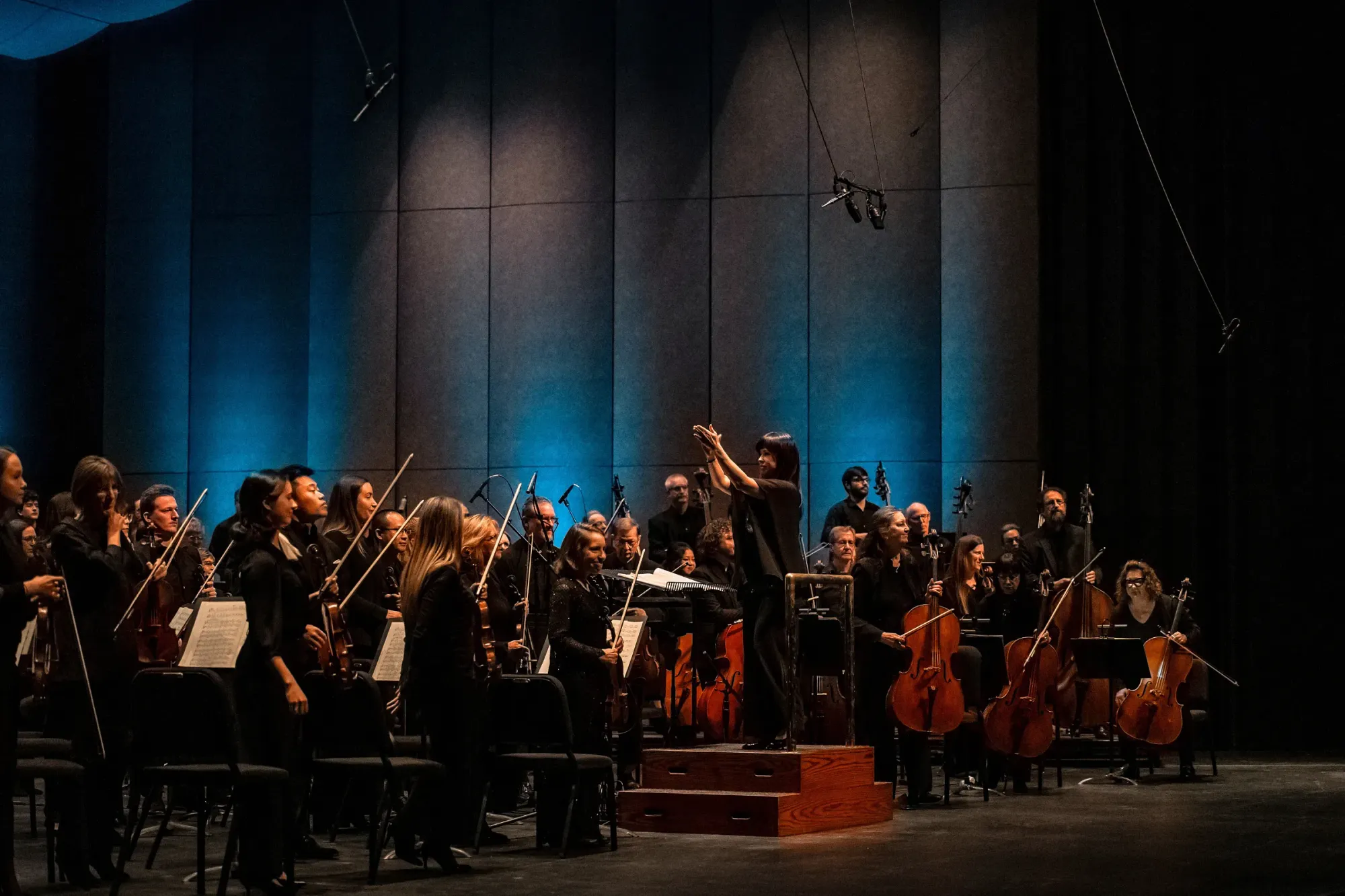Tulsa Symphony Orchestra: Ebb & Flow
Tulsa Performing Arts Center
Jan. 13, 2024
What if I told you that one of the most exciting pieces of classical music ever written consisted of one three-measure rhythm, played unchanging except for a crescendo (rising volume) a total of 169 times, with only two melodies repeated over and over, for fifteen minutes? It might sound torturous. In the hands of the excellent Tulsa Symphony Orchestra, which performed Maurice Ravel’s Boléro on a program called “Ebb & Flow,” it was anything but.
That crescendo creates an effect almost like what you might experience at a dance club: a thumping beat that builds as it repeats. The two melodies seep in and out of each other, one tonally sensible and at times boring, one jazzy and almost vocal. Part of the joy of the piece is the near-silence in which it begins — a lone snare drum tapping out triplets in the ambiance (you could hear people shifting in their seats in the beginning) — and the climactic fortissimo volume in which it concludes. At the end, after experiencing Boléro in person for the first time, I felt the way I feel when I get off of a treadmill after a long, fast walk: propelled forward by the continuous energy of the thing.
It was a surprising transition, then, to Claude Debussy’s La Mer, a mostly quiet and ambitious symphonic work whose name reflects its desire to capture what it’s like to be at sea. If the Ravel was a sprint, the Debussy was a long walk along the shore: a storm arrives, waves crash, you stop for a while to watch the sun set, and later, rise. After all the blaring excitement of the Ravel, I felt a little bored by Debussy’s plaintive, slow Impressionism — while his experimental work strikes many as meaningful, I am not among them — though the great crashes at the ends of the first and third movements were marvelous and worthy of the twenty-seven minutes. The TSO, as always, played the hell out of everything, even as the audience hacked and coughed through it.
Let me have my little gripe real quick. You know how sometimes, in YouTube recordings of classical music, there’s a weird moment in between movements of a symphony in which the entire crowd starts coughing and hacking? We as Tulsa’s classical-music-viewing population should learn and practice that skill of holding in our coughs until the breaks between the movements. (Don’t take this as medical advice; I’m not a doctor. But I am an easily-annoyed writer.) Bring lozenges if you’re going to cough. Coughing during a quiet, slow, classical music piece is distracting and weird. Stop doing it! Anyway.
The final piece of the night was Brahms’s Symphony No. 3. The first two movements of the work are quite slow: even the great build in the latter half of the first movement failed to shake the evening from the slumbering chains placed there by Debussy. The beginning of the third section, however, was a victory for the strings, who wafted through the section like flower petals falling from a chandelier; it moved me to tears. The gentle ending wrapped the program up in a beautiful bow, and we were off into the cold night.
The energetic Ravel was easily worth the price of the ticket. For some, the Debussy and the Brahms will have been crowning glories — and they were certainly beautiful and well-played pieces of music — but my attention span is broken from a life of iPhones and console gaming. I would have put Boléro at the end, but that doesn’t quite have the gravitas of ending with a Brahms. I know that not every show needs to finish with an eruption of energy, and the calming end certainly made me appreciate the sharp night air that greeted me upon leaving the PAC. Ultimately, it was a fitting way to mark the hard storm that hit us the morning after. Hope everybody’s feeling well. Get that cough checked out.
Next for Z. B. Reeves: Knipple’s Variety of Games Show at Thelma’s Peach
Next for TSO: Berlioz’s Symphonie Fantastique, February 3






